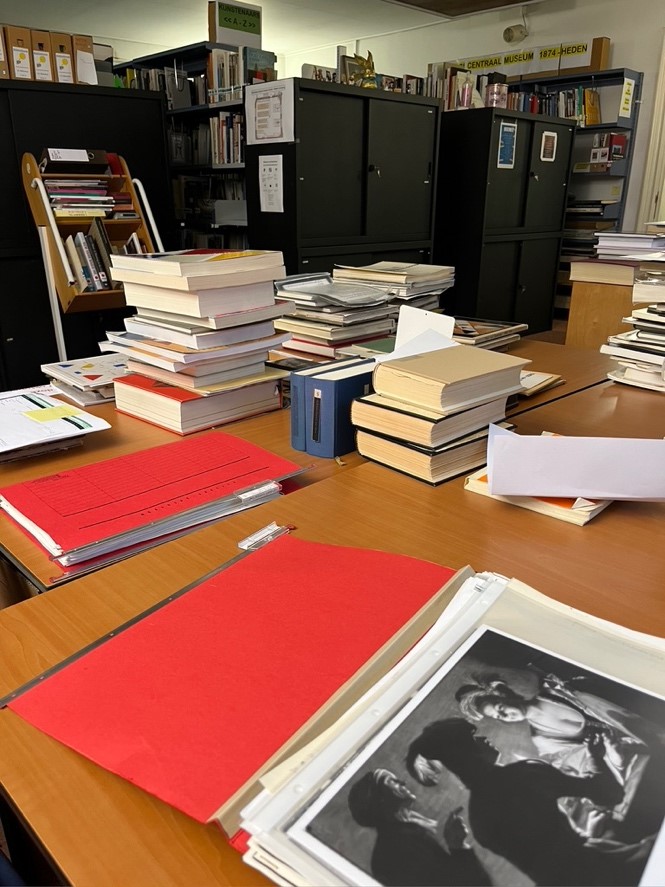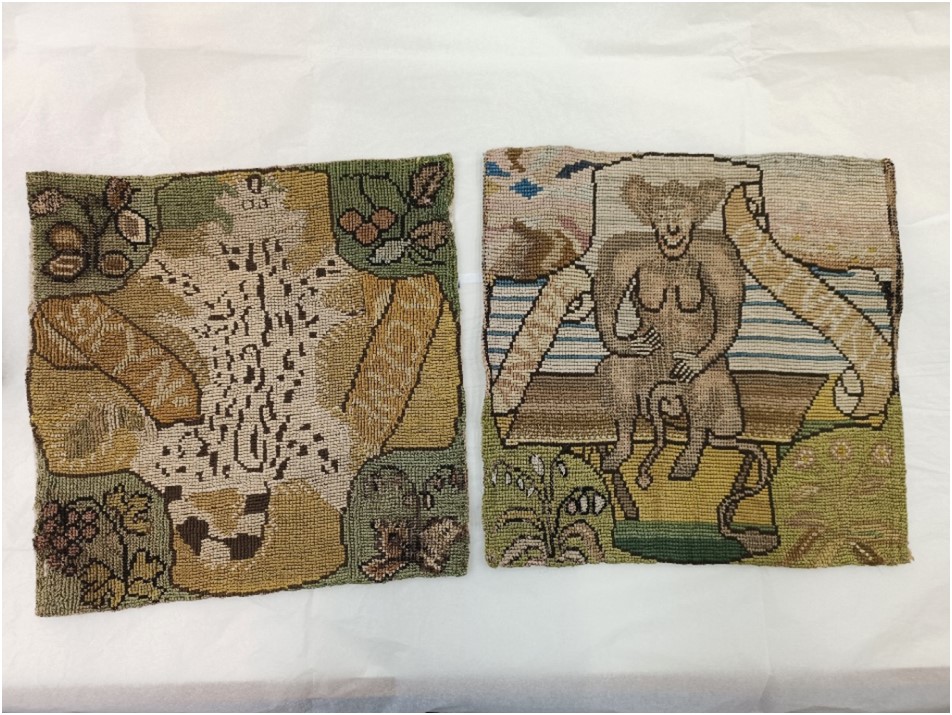Tessa Trethowan Dissertation Bursaries
The Tessa Trethowan Memorial Fund was set up in memory of Tessa Trethowan, who graduated from the Department of Art History in 1990. The Fund offers bursaries to help undergraduate students with travel costs and other significant expenses incurred in connection with the preparation of their dissertation. We supported 8 Trethowan bursaries in 2021-22, and 8 in 2022-23.
In 2023–24, the Fund supported the following projects:
Emma Stoddart - Hidden Desires: a comparative analysis of the male and female gaze in nineteenth-century depictions of the oriental woman and the harem
The work of artists such as Jean-Auguste-Dominique Ingres and Jean-Louis Gérôme, is renowned for its erotic depictions of the Oriental Woman. Despite never encountering Ottoman women first-hand, male artists created imagery that was considered the dominant image of the Orient. These paintings are ‘othering’, utilising a male gaze in relation to colonial ideologies to sexually subvert, objectify and commodify the East as an object of desire. Emma’s dissertation challenged this perspective by comparing the male gaze with the work of two female orientalists: Elisabeth Jerichau-Baumann and Henriette Browne. Able to enter the harem thanks to their gender, these women provide a more nuanced perspective of Ottoman femininity. Despite this, their works have been largely marginalised in scholarly discourse. With Trethowan support, Emma was able to visit the Louvre to examine the impact of the male gaze on the viewer first-hand.

A. D. Ingres, La Grande Odalisque, 1814
Annabel Haggerty - Bringing Ottilie Reyländer into the Conversation
With the help of a Trethowan Bursary, Annabel travelled to Germany to conduct first-hand research into the subjects of her dissertation: the painters Ottilie Reyländer and Paula Modersohn-Becker. One of the main challenges she faced with her topic was a dearth of published research and criticism: nothing had been written on Reyländer in English, and very little in German. It was also difficult to access images of Reyländer’s work online. Thanks to the Trethowan, Annabel was able to visit relevant collections in Hamburg, Bremen and Worpswede. In Worpswede, the village and artist’s colony where Reyländer trained, Annabel studied several of the artist’s works in person and acquired an immensely helpful exhibition catalogue. She also visited the Paula Modersohn-Becker Museum where she conducted close analysis of another painting that was the focus of one of her chapters.

Paula Modersohn-Becker, Sitting Girl Nude with Apple, 1906
Rosie Miller - Women as Objects or Agents of Visual Pleasure? Re-Examining the Female Gaze in Gerrit van Honthorst’s Erotic Scenes
With the support of a Trethowan Bursary, Rosie was able to spend two days in Utrecht, the home of the seventeenth-century Utrecht Caravaggisti. Counter to traditional Golden Age narratives, Utrecht artists were remarkably independent from their rivals in Holland, yet they have been understudied in international scholarship. Working in the libraries of Utrecht University and Centraal Museum, Rosie uncovered a range of titles that were unavailable in St Andrews; she also received valuable recommendations and support from field experts. The museum also gave Rosie a private viewing of its Golden Age art collection, at that time closed to the public. This included Der koppelaarster, one of three paintings that she was studying for her research into the female gaze in Gerrit van Honthorst’s erotic scenes.

Centraal Museum Archives
Sophie Sullivan - David Hockney: Bigger and Closer and Monet’s Les Nymphéas. Understanding the Reception of Two Nature-Based Immersive Installations in 2024
Sophie’s dissertation compared Monet’s Les Nymphéas with a multi-sensory ‘immersive’ exhibition of David Hockney’s work. The comparison allowed her to determine how audiences today react to and experience multi-sensory versus non-multi-sensory immersive nature-based installations, conceived a century apart.
A Trethowan Bursary allowed Sophie to undertake visitor observations at the Musée de l’Orangerie in Paris and note how visitors behave within the installation space of Les Nymphéas. These observations lead her to conclude that increased tourism hinders this installation from being received in the way that Monet originally intended – as a place of silent meditation. In contrast, the contemporary multi-sensory Hockney exhibition negates many of the issues that negatively impact the viewing of Les Nymphéas.

La Salle des Nymphéas, Musée de l’Orangerie
Morag McQueen - Toucans, Sea Monks and Cacti: understanding the context behind the subjects of the Sheffield Panels
The Oxburgh Hall Hangings, or the Sheffield Panels (c. 1570–85), are a series of embroidered panels by Mary, Queen of Scots, and Bess of Hardwick. They were created during Mary’s imprisonment under the guardianship of Bess’s husband, the Earl of Shrewsbury. While most art historical literature on the panels is largely concerned with their political symbolism, this dissertation aimed to explore the themes present in the non-political imagery. The Trethowan Bursary allowed Morag to visit Oxburgh Hall and the V&A collections unit, where she was able to conduct a detailed analysis of these pieces of textile art. This gave her a greater understanding of the intended purpose of the panels and how they have been altered over time.

Mary Queen of Scots, Panels, c. 1569–84
Nicole Entin - 'Into her picture, into the past': perspective and temporality in the works of Julia Margaret Cameron and Virginia Woolf
A Trethowan Bursary enabled Nicole to travel to London to visit an exhibition at the National Portrait Gallery entitled Francesca Woodman and Julia Margaret Cameron: Portraits to Dream In. This rare opportunity to view Cameron photographs from collections as diverse as the V&A and the J. Paul Getty Museum enhanced the content and perspective of her dissertation. Juxtaposing Cameron’s photography with that of the twentieth-century American photographer Francesca Woodman, the exhibition brought Cameron into conversations surrounding modern and contemporary culture and resonated with Nicole’s own approach to perspective and temporality in her study of works by Cameron and Woolf. Having the chance to see such a wide range of Cameron’s photographs in person facilitated several arguments in Nicole’s dissertation, which also drew on new articles published in the exhibition catalogue.

View of the exhibition Francesca Woodman and Julia Margaret Cameron: Portraits to Dream In
Serena Mundy - The Rape of the Sabine Women on Quattrocento Cassoni: humanistic socio-political ambitions and Gender Dynamics
Serena’s dissertation centred on cassoni, fifteenth-century Florentine patrician wedding chests, specifically those depicting the Rape of the Sabine Women. She analysed the positioning, iconography, and function of cassoni in relation to women, arguing that the socio-political landscape of fifteenth-century Florence necessitated a rise in birth rates and that cassoni played a role in achieving this. A Trethowan Bursary enabled her to travel to Florence and view some of the only extant intact cassoni in the Galleria dell’Accademia and Museo del Bargello. She also visited the Palazzo Davanzati, which shows the cassoni within the marital chamber and demonstrates their relationship to the other objects in the room.

Cassoni in Palazzo Davanzati, Florence